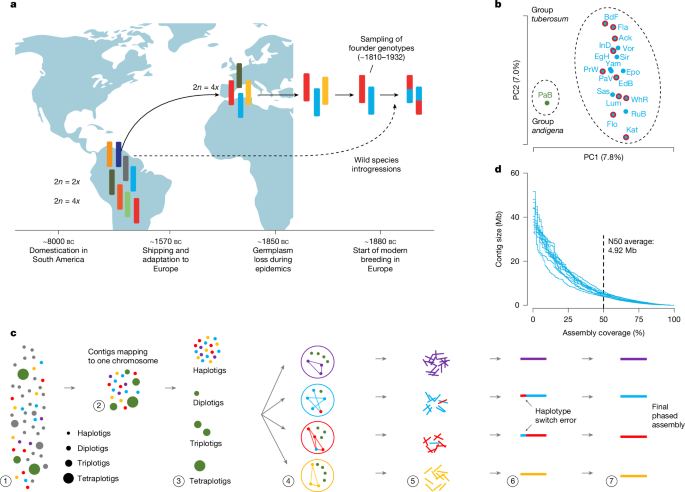
"Cultivated potato, despite being the most important non-cereal crop, faces significant breeding challenges due to its complex autotetraploid genome."
"Only three complete and haplotype-resolved genome assemblies for tetraploid potato cultivars exist, necessitating the creation of recombinant offspring populations for effective analysis."
"The genetic diversity found in potato genomes is astounding, showing about 1 difference in 50 base pairs, highlighting the genome's complexity compared to other plants."
"Domesticated for over 10,000 years in the Andes, the potato became Europe's staple crop, but faced crises due to disease in the 19th century."
The cultivated potato is vital as a food crop but faces significant challenges in improvement due to its autotetraploid genome. This complexity leads to difficulties in traditional breeding methods and calls for extensive genome analysis. Currently, only three complete genome assemblies have been created, which required the creation of offspring populations for adequate sequencing. The high genetic diversity in potatoes poses both a challenge and an opportunity for breeding, while the crop's history illustrates its global importance and vulnerabilities, particularly highlighted by the 19th-century potato famine caused by a devastating disease.
Read at Nature
Unable to calculate read time
Collection
[
|
...
]